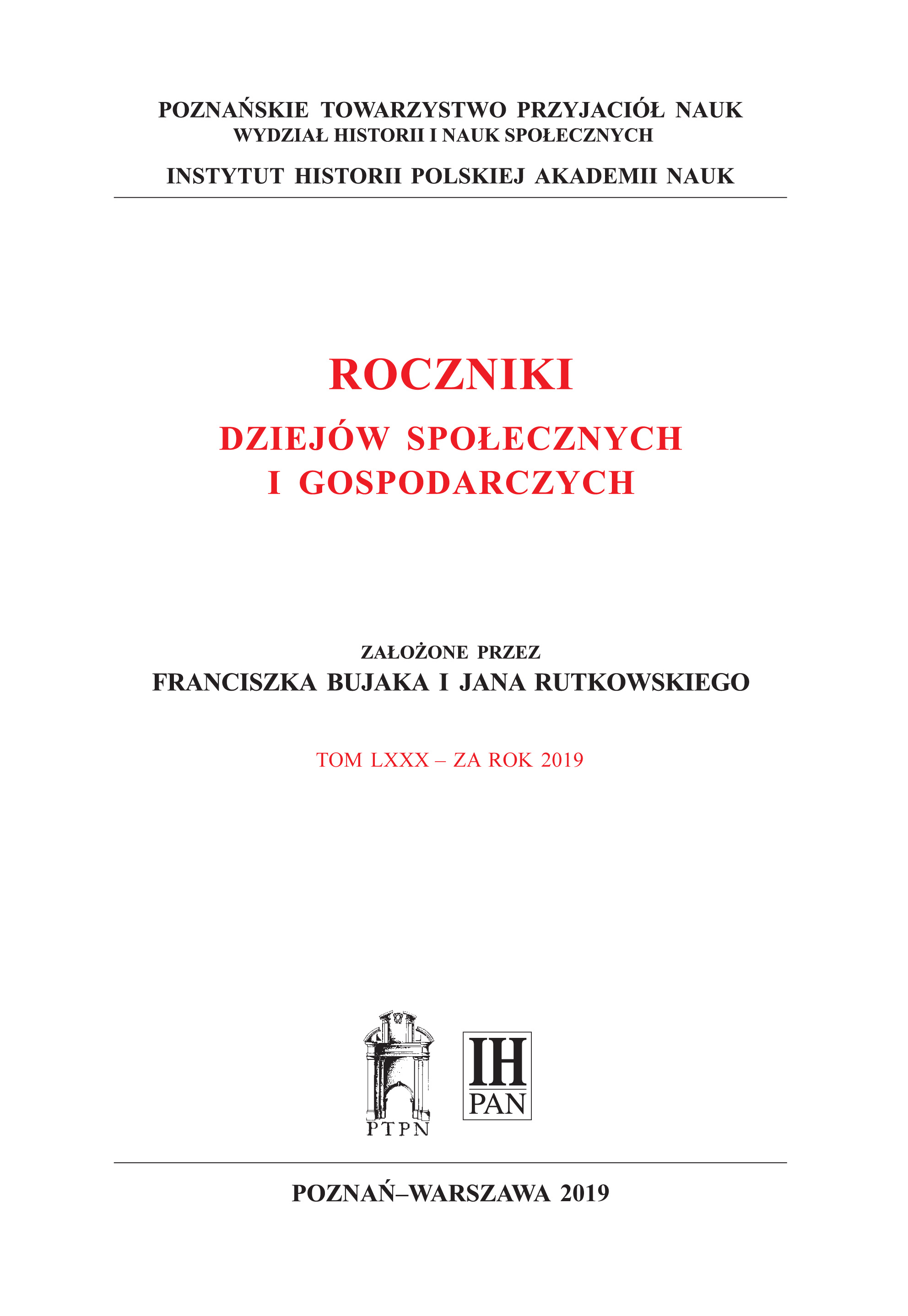Spatio-temporal aspects of the extraordinary tax collecting system in Greater Poland (1492–1613)
Spatio-temporal aspects of the extraordinary tax collecting system in Greater Poland (1492–1613)
Author(s): Michał Gochna, Tomasz ZwiązekSubject(s): Historical Geography, Economic history, Social history, 15th Century, 16th Century, 17th Century, Fiscal Politics / Budgeting
Published by: Instytut Historii im. Tadeusza Manteuffla Polskiej Akademii Nauk
Keywords: historical geography; state finances; historical economy; early modern period; history of Poland; Polish Crown; taxes; historical GIS;
Summary/Abstract: The article deals with issues related to the spatial and temporal functioning of the revenue system in the sixteenth-century Crown of the Kingdom of Poland, on the example of Greater Poland. The chronological scope of the work covers the period from the turn of the fifteenth century, when the Polish parliamentary system had begun to take shape, to the early seventeenth century, or more precisely, to the establishment of the Crown Treasury Tribunal in 1613. The authors make an attempt to determine the suitability of the spatio-temporal perspective in the research on the history of taxation by analysing selected aspects of the extraordinary tax collection process. The study presented here also touches upon the problems related to the transformation occurring in the revenue system of the Crown. The system gradually changed from the centralised model, with decisions regarding tax matters being made by the Sejm while the monarch exacted control over the process through his officials, to a more decentralised model, in which local nobility assemblies played a greater role in managing state finances.
Journal: Roczniki Dziejów Społecznych i Gospodarczych
- Issue Year: 2019
- Issue No: 80
- Page Range: 65-111
- Page Count: 47
- Language: English

